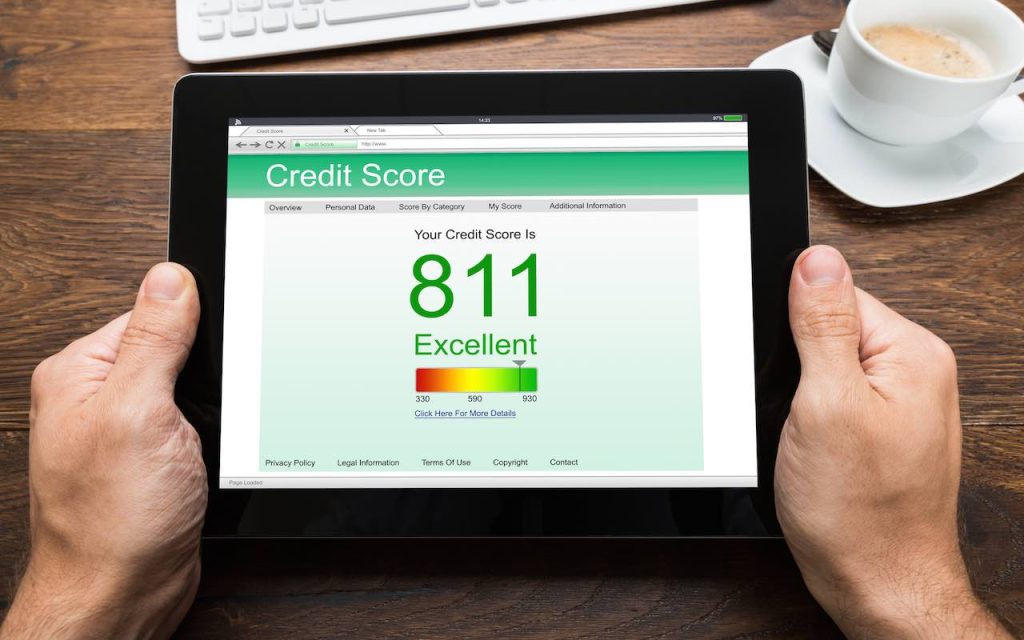
There are many articles that tell you how to increase your score, such as going from fair credit to good credit. But my goal is to show you how to get a high credit score.
Not just any score, but a truly high credit score. And you’ll be happy to hear that you don’t need a perfect score. If you can increase your FICO score to at least 760, you’ll qualify for the best interest rates for credit cards, mortgages and personal loans. A high credit score, depending on the state you live in, can also help you save on car, health and life insurance premiums.
So, get comfortable and reach for the credit score stars. If you follow these tips, you’ll get there.
How High Do Credit Scores Go?
FICO scores range from 300 to 850. A very good FICO score is between 740 and 799. An exceptional score ranges from 800 to 850. Achieving a score of more than 800 is satisfying, but it’s unnecessary.
As long as you have a FICO score of 760 or higher, you’ll get the top interest rates when you apply for credit. So a 760 FICO score is your minimum goal. But if you want a score higher than 800, I wouldn’t dream of stopping you. In fact, my tips will help you get there.
You probably already have a good idea of how your score ranks, but check to see the current status so you have a starting point. Also determine if you’re seeing a FICO score or a VantageScore. VantageScore also ranges from 300 to 850. But it weights the factors differently. Don’t try to compare your VantageScore directly with a FICO score.
Here are just a few places you can often get a free credit score:
— Your monthly credit card statement.
— Your bank where you have checking or savings accounts.
— Free credit score websites (these are usually a VantageScore).
— Credit card issuers that offer scores to everyone, such as American Express and Discover.
The credit score you see may not be a FICO score, but even educational scores have value. If your only access is to a VantageScore and you want a FICO score, American Express and Discover both offer free FICO scores, and you don’t have to be a cardholder to access a score.
If all else fails, you can always pay for a FICO score at myFICO.com for $19.95. Be sure you select “One-time Reports” so you don’t sign up accidentally for a monthly subscription.
How to Get a Higher Credit Score
The good news is that your credit is already in a good place. And if you pay attention to the following tips, you can attain a high credit score.
— Check your free credit reports.
— Keep low credit utilization ratios.
— Pay down your debt.
— Don’t apply for new credit.
— Make two payments in one month.
Check Your Free Credit Reports
This is like housekeeping for your credit. You need to review your free annual credit reports to make sure there isn’t anything in your report that’s inaccurate. If there is, that can bring down your credit score unnecessarily.
So, if you haven’t checked your free annual credit reports from the three major credit bureaus in a long time (or ever), go ahead and check all three. Review every line and make sure it looks right. Also look for any new accounts that you didn’t open. This is a sign of fraud, and you’ll need to take action as soon as possible. The Federal Trade Commission offers steps to take if you need to dispute errors on your credit report. You can report identity theft at IdentityTheft.gov, which is also part of the FTC.
Keep Low Credit Utilization Ratios
Your credit utilization ratio is the amount of credit you’ve used compared with the amount of credit you have available. Credit utilization is 30% of your FICO score, so it’s a big factor to keep in mind.
Example: You have a credit card with a $5,000 limit. Let’s say your balance is $2,000. This means you have a credit utilization ratio of 40% (2,000/5,000 = 40%).
Your utilization ratio should not exceed 10% if you’re going for a high credit score. So, in this example, your balance should not exceed $500 during the month (500/5,000 = 10%).
Keep a 10% utilization ratio on your cards overall and on your individual cards. The FICO algorithm considers both in the calculation.
One more quick trick to lower your ratio: Ask for a credit limit increase on one of your credit cards. This increases the amount of available credit, which can decrease your utilization ratio.
Pay Down Your Debt
If you have a $5,000 balance on a credit card with a $10,000 limit, you have a ratio of 50%. Cut that balance in half, and your ratio is 25%. That’s much better, but your score won’t go as high as possible until your balance is below $1,000.
The best antidote for this is to pay down your debt. As your ratio starts going down, your score will start going up. As long as you have your budget in place and continue to track your spending, you’ll get a high credit score and keep it there.
If you have good credit, then getting a balance transfer credit card with a 0% introductory annual percentage rate might work for you. This situation is an exception to avoiding new credit. Credit card debt is toxic, and everything else needs to take a back seat to it. A balance transfer card allows you to pay off your debt while paying zero interest during the intro period.
As you just learned about credit utilization ratios, as your debt goes down, your score will go up.
Don’t Apply for New Credit
Unless you need a balance transfer credit card, I want you to stop applying for credit cards or loans. Each time you apply for a credit card, for instance, it’s a hard inquiry on your credit report. You could lose up to five points off your credit score for each application. So while you’re chasing a high score, take a break from new credit.
If you’re in a situation where you need a car loan or something similar, it’s fine to go ahead. The silver lining is that having a mix of credit can help your score a little bit. I’m not saying go buy a car. But if it’s a necessity, consider the eventual benefit to your score.
Make Two Payments in One Month
Here’s another strategy to morph your score into the high 700s. If you had a big expense, make a payment in two weeks. Then make another payment before the balance is due.
This lowers your utilization ratio because your debt is smaller. If you’re trying to boost your score in a hurry because you want to apply for a mortgage or other credit, this is a tool you can try. It’s even more effective if you ask your issuer when it reports your history and your balance to the bureaus. This way, you can time your payments so they are very low when your balance is reported.























